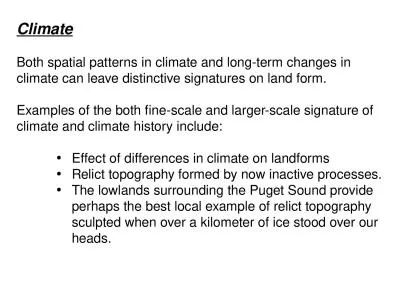PPT-WELCOME Earth Science and climate change conference
Author : doggcandy | Published Date : 2020-08-03
By Tara Pokhriyal Effect of heavy metal ion on the antioxidant properties of Mentha spicata An Introduction Antioxidantmechanism and how they destroy radicals
Presentation Embed Code
Download Presentation
Download Presentation The PPT/PDF document "WELCOME Earth Science and climate change..." is the property of its rightful owner. Permission is granted to download and print the materials on this website for personal, non-commercial use only, and to display it on your personal computer provided you do not modify the materials and that you retain all copyright notices contained in the materials. By downloading content from our website, you accept the terms of this agreement.
WELCOME Earth Science and climate change conference: Transcript
Download Rules Of Document
"WELCOME Earth Science and climate change conference"The content belongs to its owner. You may download and print it for personal use, without modification, and keep all copyright notices. By downloading, you agree to these terms.
Related Documents














